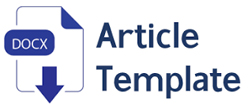Skrining Penyakit Tidak Menular di Desa Hutumuri, Ambon
Non-Communicable Diseases Screening in Hutumury Village, Ambon
Abstract
Non-communicable diseases (NCDs) have a long duration and generally develop slowly. In 2016, about 71% of the world's causes of death were NCDs, killing 36 million people per year. WHO data in 2018 states that 73% of deaths are currently caused by non-communicable diseases, 35% of which are due to heart and blood vessel diseases, 12% by cancer, 6% by chronic respiratory diseases, 6% by diabetes, and 15% by other NCDs. Community Service activities were carried out to screen NCDs in the Ambon City community, especially in Hutumuri Village, precisely at the Hutumuri Village Health Center, South Leitumur sub-district, Ambon City. The activities were blood glucose, cholesterol, and uric acid checks. Screening were carried out on 90 participants, and the examination results showed that 81% of participants had normal blood glucose levels. The cholesterol examination found that most experienced an increase in cholesterol from the expected levels (64.4%). Furthermore, for the uric acid examination, it was also found that most experienced an increase from the normal levels (72%). This community service initiative underscores the critical importance of early detection and intervention in managing NCDs, thereby contributing valuable insights into the prevalence of these conditions within specific demographic locales. Such endeavours are pivotal in shaping public health strategies and facilitating the allocating of healthcare resources towards mitigating NCDs' impact on global health.
Downloads
References
Kementerian Kesehatan Republik Indonesia. Buku pedoman manajemen penyakit tidak menular. Jakarta: Kementerian Kesehatan Republik Indonesia; 2019.
Roosihermiatie BR. Faktor risiko dan pencegahan penyakit tidak menular di Indonesia [Internet]. Airlangga University Press. 2023 [cited 2024 Mar 2]. Available from: https://omp.unair.ac.id/aup/catalog/book/461
Sidjabat FN. Pengendalian penyakit tidak menular di Indonesia. BIMKMI. 2015;3(2).
Arifin H, Chou KR, Ibrahim K, Fitri SUR, Pradipta RO, Rias YA, et al. Analysis of modifiable, non-modifiable, and physiological risk factors of non-communicable diseases in Indonesia: Evidence from the 2018 Indonesian basic health research. J Multidiscip Health. 2022;15:2203-21.
Sudayasa IP, Rahman MF, Eso A, Jamaluddin J, Parawansah P, Arimaswati A, et al. Deteksi dini faktor risiko penyakit tidak menular pada masyarakat Desa Andepali Kecamatan Sampara Kabupaten Konawe. Aksiologiya: Jurnal Pengabdian Kepada Masyarakat. 2020;3(1):153-60.
Badan Penelitian dan Pengembangan Kesehatan. Riset Kesehatan Dasar (RISKESDAS) 2013. Jakarta: Lembaga Penerbit Badan Penelitian dan Pengembangan Kesehatan; 2013.
Badan Penelitian dan Pengembangan Kesehatan. Laporan Riskesdas 2018 Nasional. Jakarta: Lembaga Penerbit Badan Penelitian dan Pengembangan Kesehatan; 2019. p. 146–379.
Kementrian Kesehatan Republik Indonesia. Profil penyakit tidak menular tahun 2016. Jakarta: Kementerian Kesehatan Republik Indonesia; 2017.
Sekarrini R. Gambaran faktor risiko penyakit tidak menular di Kelurahan Umban Sari Kecamatan Rumbai Pekanbaru menggunakan pendekatan Stepwise WHO. Humantech: Jurnal Ilmiah Multidisiplin Indonesia. 2022;1(8):1087–97.
Wahudin M, Agustiya RI, Putro G. Beban penyakit dan program pencegahan dan pengendalian penyakit tidak menular di Indonesia. J Epidemiologi Kesehatan Indonesia. 2022;6(2):105-12.
Adnyana IDM, Sari NW, Arifin Z, Prihatin K, Fatmawati B, Wahyudi G, et al. Epidemologi penyakit tidak menular. Bandung: Media Sains Indonesia; 2023.
Kementerian Kesehatan Republik Indonesia. Peraturan Menteri Kesehatan Republik Indonesia nomor 71 tahun 2015 tentang penanggulangan penyakit tidak menular. Jakarta: Kementerian Kesehatan Republik Indonesia; 2015.
Vizeshfar F, Momennasab M, Yektatalab S, Iman MT. Evaluation of the effectiveness of a first aid health volunteers’ training programme using Kirkpatrick’s model: A pilot study. Health Education Journal. 2018;77(2):190-7.
Lohr JW. Hyperuricemia [Internet]. Medscape. 2022. Available from: https://emedicine.medscape.com/article/241767-overview#a6
Kementerian Kesehatan Republik Indonesia, Direktorat Jenderal Pelayanan Kesehatan. Mengenal penyakit tidak menular [Internet]. Kementerian Kesehatan Republik Indonesia; 2023. Available from: https://yankes.kemkes.go.id/view_artikel/2501/mengenal-penyakit-tidak-menular
Dinas Kesehatan Provinsi Maluku. Laporan akuntabilitas kinerja pemerintah (LKIP) Dinas Kesehatan Provinsi Maluku Tahun 2021. Ambon: Dinas Kesehatan Provinsi Maluku; 2021.
Copyright (c) 2024 The Author(s)

This work is licensed under a Creative Commons Attribution-ShareAlike 4.0 International License.






